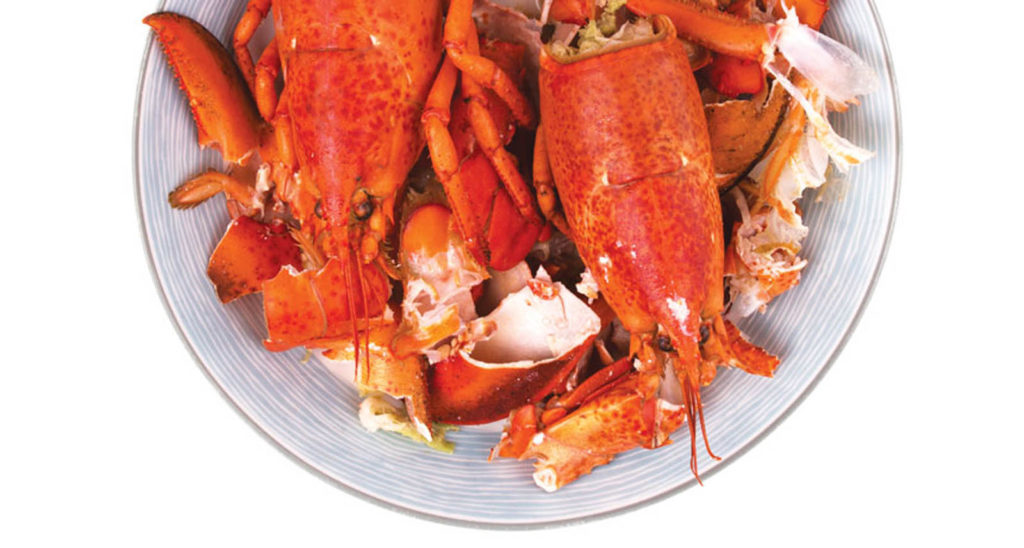
Scientists are tackling the world’s need to keep plastics out of landfills and waterways. One method may be found in making the most of seafood waste. A Science News article reports that the shells of crustaceans contain chitin, a material that has many of plastic’s desirable properties, but it can take weeks or months to biodegrade, rather than hundreds of years.
After cellulose, chitin is one of the most abundant organic materials on the planet, according to the article. It’s found in fish scales, mollusks, insects and fungi. The current challenge, though, is garnering enough chitin and its derivative chitosan from the shells to create bio-based plastic cost-effectively. Also, separating the chitin from the shells has thus far relied on corrosive chemicals and a bevy of resources. Lye and hydrochloric acid are used to pull out proteins and minerals. Up to 530 kilograms of water may be used to produce a kilogram of chitin. In addition, the strands produced were short, possibly compromising the polymer’s strength and versatility.
Then Mari Signum Ltd., based in Richmond, Va., licensed Robin Rogers’ technology in 2016 and the prospects changed. “We found we could take shrimp shell, dissolve the chitin directly and pull it away from everything else,” Rogers said. Mari Signum is a subordinate company Archipelago Aquaculture Group a subsidiary of U.K.- based Ross Group.
Rogers’ process uses an ionic liquid to dissolve shell waste. No corrosive chemicals are needed and the ionic water can be used repeatedly. Calcium carbonate is produced as waste, but the company is exploring providing the byproduct to manufacturers of paint additives or heartburn medication.
Chief technology officer, Julia Shamshina, Rogers, and chemist Paula Berton of the University of Calgary, Canada, have now shown their ionic-liquid-extracted chitin can be converted to hydrogels and fibers, materials capable of absorbing and retaining water. In the April 1 issue of ACS Sustainable Chemistry and Engineering, the researchers discussed potential applications for wound-care materials and biodegradable delivery vehicles for drugs, because chitin and chitosan are nontoxic and antibacterial.
Research elsewhere
Scientists at McGill University are also making headway in scaling up chitin production. They’re using mechanochemistry to break the bonds that hold chitin to the crustacean and insect shell powder. Chemist Audrey Moores at McGill estimates the process uses an eighth as much sodium hydroxide, a tenth of the water and a third to a fifth as much energy as the traditional conversion process. It also produces long polymer chains.
Another scientific team is putting bacteria to work obtaining chitin and chitosan from langoustine shells. Chemist Cait Murray-Green, CEO of CuanTec in Scotland, says the bacteria they use produce natural acids, which can replace harsh hydrochloric acid traditionally used. The CuanTec process yields long polymer chains and is said to have cut energy use by two-thirds and eliminated roughly 95 percent of the sodium hydroxide usually used in the separation process.
The first product CuanTec will produce is compostable, antimicrobial food packaging. Tests suggest the packaging could extend the shelf life of fresh salmon by three days compared to plastic. “This story is about using food waste to prevent food waste,” Murray-Green said in the article.
Susanne Zibek’s team at the Fraunhofer Institute for Interfacial Engineering and Biotechnology in Stuttgart, Germany, lets microbes do the work of separation. But only certain bacteria are suitable for purifying chitin from the shells. Zibek’s team selects microbes that consume the protein but not the chitin. Those microbes secrete lactic acid, a substitute for hydrochloric acid.
Moreover, Zibek leads ChitoTex, an international chitin research consortium, and one of her collaborators is Protix, a Dutch firm that produces insect larvae protein for animal feed. The chitosan-rich Protix insect skin waste has turned into an alternative for the textile industry. Instead of using a temporary plastic coating, often made with polyvinyl alcohol, to offset breakage during the weaving process, Zibek has created a temporary chitosan coating.
Her team, too, will need to scale up production to make chitosan products viable in the industry, but the technology is promising for keeping shells and plastic out of landfills and for making textiles more sustainable.
 TEXTILES.ORG
TEXTILES.ORG


